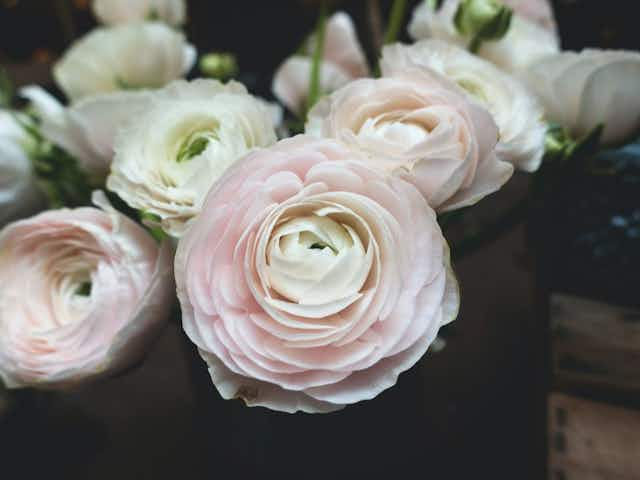What's a Funeral Pyre & Who Used Them?
Updated
Published


Cake values integrity and transparency. We follow a strict editorial process to provide you with the best content possible. We also may earn commission from purchases made through affiliate links. As an Amazon Associate, we earn from qualifying purchases. Learn more in our affiliate disclosure.
A funeral pyre is a method of cremation where the body is burned on or within a pile of wood. A funeral pyre structure is placed outside, unlike in other types of cremation.
Jump ahead to these sections:
- Funeral Pyres Explained
- Why Do People Use Funeral Pyres?
- Funeral Pyres in Different Cultures
- Funeral Pyres in the United States
- Where Are Funeral Pyres Legal?
- Environmental Concerns of Funeral Pyres
Although most people associate a funeral pyre with Hindus in India, this cremation method has been used by many other cultures throughout the centuries. Some Hindus, especially those living in different regions, do not use a funeral pyre as a part of their end-of-life ceremonies.
Let's learn about the history of funeral pyres and their modern uses. We will also discuss the environmental concerns of funeral pyres.
Tip: If you're looking for something very unique to honor a loved one, you can custom order an urn from a store like Foreverence or even have a memorial diamond created from ashes with a company like Eterneva.
Funeral Pyres Explained
To explain a funeral pyre, we’ll turn to modern-day India. Although the customs vary from region to region, here is the basic process.
- When a person dies, their body is prepared for cremation.
- Family members build a funeral pyre, usually on the banks of the Ganges River. The pyre is typically made of 1,300 pounds of wood.
- Next, the body is placed in a casket or coffin and carried by a stretcher to the river. At times, the body may be transported in a hearse.
- The body is placed on the funeral pyre.
- The oldest male relative will walk around the body counterclockwise three times. As he walks, he will sprinkle holy water on the pyre.
- The male relative will light the pyre on fire.
- The family members will stay until the body is burned, which usually takes six hours. Typically, only men participate in this ritual.
Why Do People Use Funeral Pyres?
When someone dies, how do you choose the method of disposition?
Some leave behind an end-of-life plan. This plan can be formal, like one made through Cake, a local funeral home, or a direct cremation provider. Some individuals choose to pre-pay for their funerals to remove the financial burden from their families.
Others may leave behind less formal instructions on their preferred method of disposition. For example, your grandfather may have told all who would listen that he wanted to be buried in an old pine box in the backyard.
So, personal choice is one reason people would use funeral pyres as a method of disposition.
Other times, the deceased passes away without leaving behind any formal or informal instructions. In this case, the next of kin has to make decisions regarding the method of disposition.
How are these pre-need or immediate-need decisions made?
People tend to choose a method of disposition based on their religious faith or personal beliefs. Some faith groups promote burial over cremation. Hindus and Buddhists, at least those living in Asia, may choose open-air cremation.
Others choose a method of disposition based on economic factors and determine whichever method is the least expensive.
Some pick burial or cremation because it is the tradition in their family.
Still others may select a method of disposition that they feel is the least destructive to the environment.
Finally, most select methods of dispositions that are readily available in their area.
Why would someone choose a funeral pyre or open-air cremation? This method of disposition may appeal to those whose culture or religion supports this method. However, because it is not widely available in the U.S., availability is undoubtedly a factor for those hoping for this burial method.
Funeral Pyres in Different Cultures
Throughout history, funeral pyres have been used throughout the world to cremate bodies. Here are a few of the customs that anthropologists and sociologists have studied and recorded.
Ireland
During the Bronze Age, people living in modern-day Ireland used funeral pyres to cremate the dead.
A cremation cemetery was discovered near modern-day Templenoe. Those studying the site determined that oak, fruitwood, and ash trees were used for over 600 years to fuel the pyres in the area.
The "pyre material" was buried, which included the ash from the wood as well as parts of the cremated bones.
Poland
During the Bronze and Iron Ages, the people living in modern-day Poland utilized funeral pyres.
A study was done to see if the type of wood used in the ceremony was culturally significant. Researchers discovered the pyres were built from wood that was closest to the site.
Italy
In Ancient Rome, the deceased were carried to funeral pyres located outside of the city. Once the body burned down, the remains were buried where they were burned. This type of tomb was called a "bustum."
At other times, the remains from the funeral pyre were collected and placed in an ornamented container. The containers were then placed in a tomb. This method of inurnment was verified with words that translated: "I pray that you rest quiet and safe in the urn, bones. And that the earth is not burdensome to your ashes."
For the Ancient Romans, having a funeral pyre was a sign of wealth. Professionals, called "usters" tended the fire. At times, impoverished Romans were cremated on someone else's pyre.
Nordic countries
Funeral pyres were used in the Nordic Countries as well. In fact, most people connect funeral pyres with Viking funerals. Survivors placed the body and grave offerings on the pyre. The goal was to make the pillar of smoke as large as possible. Doing so was thought to assist the deceased in reaching the afterlife.
This practice was described in an Old Norse poem from 1225. "Thus he established by law that all dead men should be burned, and their belongings laid with them upon the pile, and the ashes be cast into the sea or buried in the earth."
Although many think that Viking funeral pyres took place at sea, there is little evidence to support this. Scholars do believe that a respected Viking warrior could have his cremated remains buried inside his longboat, but the pyres are thought to have been completed on land.
Hindu cultures
While most of the cultures in this section of our article highlight practices of the past, some in the Hindu culture (mostly in India, Nepal, Bangladesh, and Indonesia) use funeral pyres.
Cremation on a funeral pyre is part of the sacred ceremony called, "antyesti," which translates to "last sacrifice."
Hindus believe that the human body consists of five elements: air, water, fire, earth, and space. The antyesti returns the body to its origins. The Hindu funeral focuses on all five elements.
As briefly discussed earlier, the deceased's body is carried to the pyre, which is usually located near a river. The body is placed on the pyre with the feet facing south.
The oldest male relative, who is sometimes the eldest son, or a priest, walks around the dry wood pyre three times. During this walk, he recites a hymn or says a eulogy. Sometimes he places seeds or rice in the deceased's mouth. At other times, this part of the body preparation is completed before arriving at the funeral pyre.
At times, the body is sprinkled with holy water. Other times the pyre is sprinkled with ghee.
To complete the ceremony, the skull is pierced with a bamboo pole. The hole in the skull is made so the spirit can be released.
Once the ash can be handled, it is placed in the nearest river or body of water.
Funeral Pyres in the United States
Hindus living in the US may struggle to find a place to have a traditional funeral pyre. One facility in Colorado offers a legal funeral pyre. Other entrepreneurs have tried to open facilities in different regions without success.
There are companies scattered across the world that offer this essential service for Hindus who do not live in India. They will take your family member's cremains to the Ganges River and arrange for an Asthi Visarjan ceremony to be performed. Such companies will give you the necessary instructions on how to ship cremains to them, and they promise to have the process completed within seven days of receipt.
Other Hindus who live far away from the Ganges prefer to use nearby rivers for the end-of-life ceremony.
Where Are Funeral Pyres Legal?
Even though funeral pyres are often used throughout the world, there are few places in the United States where this method of disposition is legal. This method of disposition is typically referred to as either “open air cremation” or “Viking funerals” as opposed to “funeral pyres.”
Although many states are discussing (or have discussed) the legality of this method of disposition (California and Maine, for example), it seems as if the only place in the nation that allows open-air cremation is in Colorado.
The organization that oversees and provides an open-air cremation option in Colorado is the Crestone End of Life Project.
This project is a non-denominational, non-profit organization dedicated to supporting individuals in making informed end-of-life choices – including open-air cremation. The organization also will assist the family and friends in planning a meaningful ceremony at the cremation site located in the mountains.
The organization also wants to help others who wish to form their own open-air cremation project in their region or state.
The pyre is made from concrete and bricks and is encircled with a bamboo fence. Visit the organization’s website to see photographs of open-air cremations and the pyre itself.
During the cremation process, the body of the deceased is wrapped in natural fabric and then surrounded by branches and logs. Then, family members or friends start the pyre on fire. The ashes of both the body and the wood are collected at the end of the ceremony.
According to this article on the Sunset website, the organization asks for a donation between $500 to $800 for each cremation. This helps cover the cost of the stretchers, firewood, and the required fire department presence.
As of 2019, the Crestone End of Life Project would only perform open-air cremation services to those who were residents of the local county. Also, the person needed to have registered with the organization before their death.
In addition to the Crestone project, a Buddhist temple in Red Feather Lakes, Colorado, conducts a few funeral pyres. However, this service is only available to its members.
Another organization called Good Ground Great Beyond is made of like-minded people working to make open-air cremation legal in Maine. Although they have not been successful yet, they hope to convince government leaders to approve of this method of disposition in what is already a cremation-friendly state.
The organization’s website has a list of disposition options available in regions throughout the country. They include green burials, alkaline hydrolysis, burial at sea, composting, burial pods, mushroom burials, and bio urns.
Both organizations, Crestone End of Life Project and Good Ground Great Beyond, accept donations of resources and time to further their beliefs in this method of disposition.
Environmental Concerns of Funeral Pyres
As people examine burial and cremation methods to determine if they are environmentally friendly, funeral pyres have also faced scrutiny.
On the one hand, ceremonies such as these have been used for thousands of years. On the other hand, 50 to 60 million trees are burned every year in India as a part of these ceremonies.
Additionally, environmentalists are concerned about the amount of ash that is deposited in the river after the ceremonies are completed.
New, more environmentally-friendly methods are being promoted in India and throughout the region. Whether or not these methods will be utilized remains to be seen.
Funeral Pyres Around the World
While it is fascinating to learn about death practices in other cultures, it does lead us to think about our own end-of-life plans.
As you learn about the customs surrounding death, perhaps you have strong opinions about what you want to happen with your remains. If you care what happens to your body after you die, it is imperative that you make and share your plans now. Leaving hints in conversations 20 years before your death will do little to help your survivors plan your services.
If you're looking for more on cremation, check out the history of cremation in the US and cremation facts.
Sources:
- Cush, Denise, Catherine Robinson, and Michael York. Encyclopedia of Hinduism. Routledge. 2007.
- Kermeliotis, Teo. "India's burning issue with emissions from Hindu funeral pyres." CNN. 17 September 2011. edition.cnn.com
- Noy, David. "Half-burnt on an Emergency Pyre: Roman Cremations Which Went Wrong." Cambridge University Press. 07 September 2009. cambridge.org
- O'Donnell, Lorna. "The power of the pyre – A holistic study of cremation focusing on charcoal remains." Journal of Archaeological Science. January 2016. sciencedirect.com



